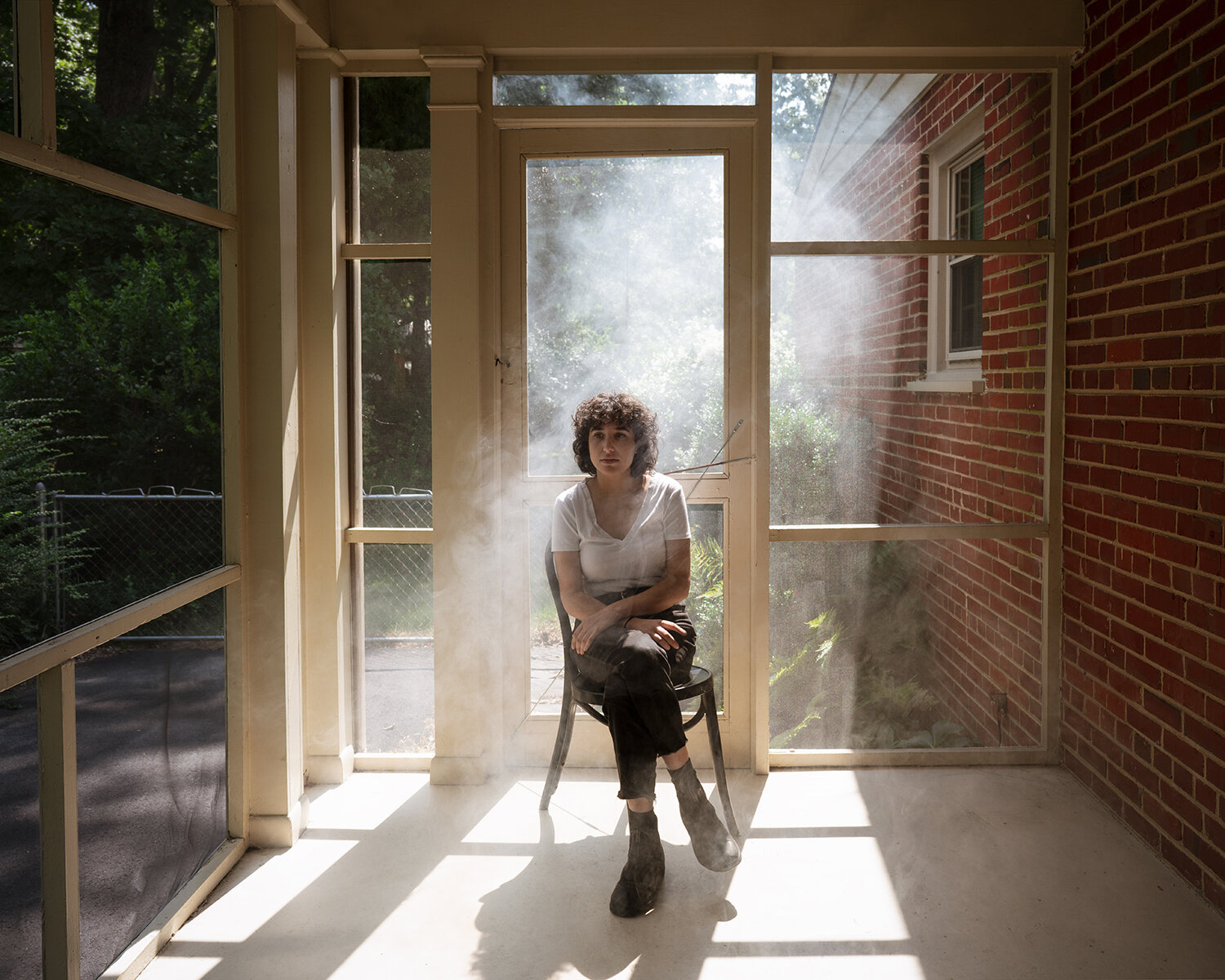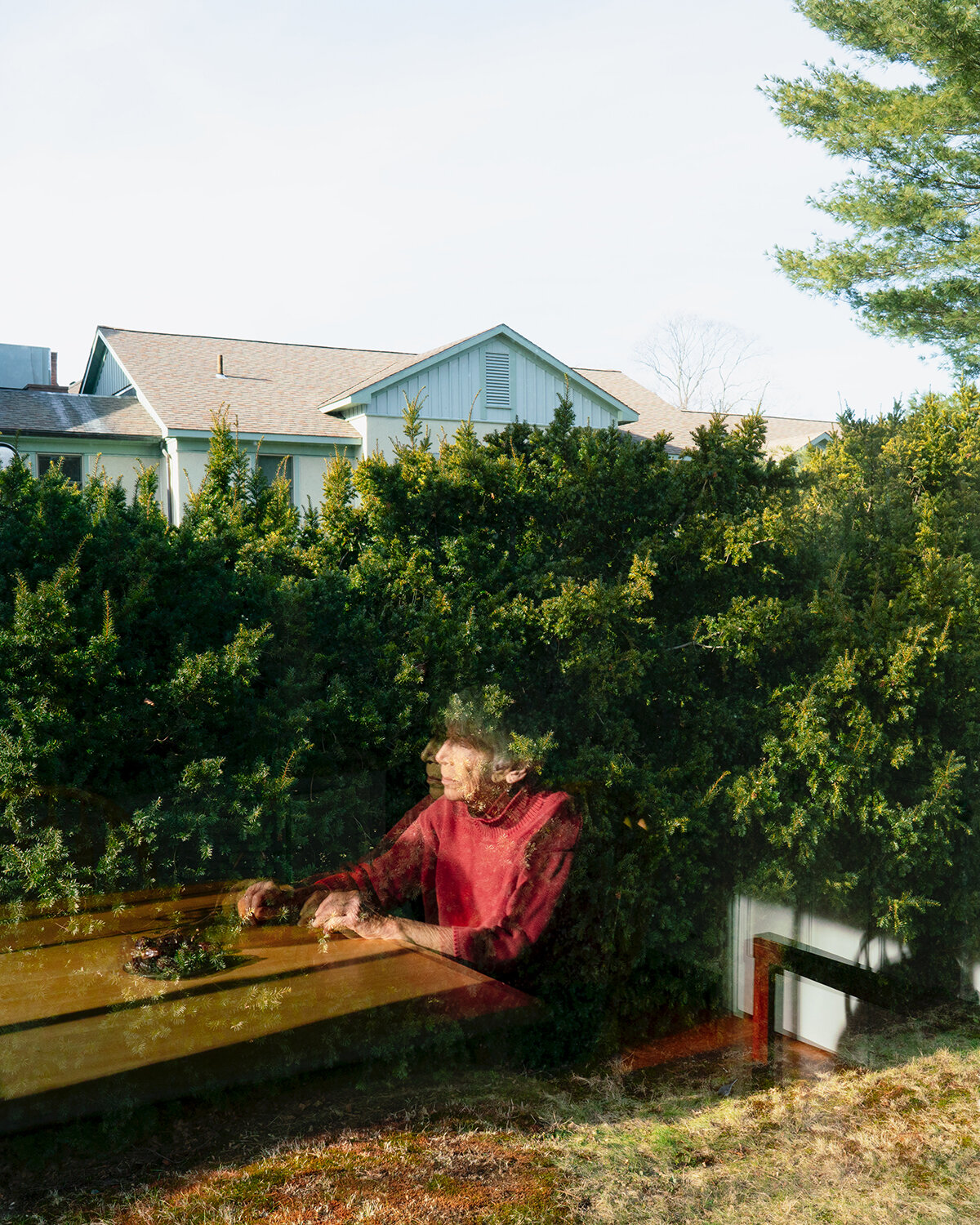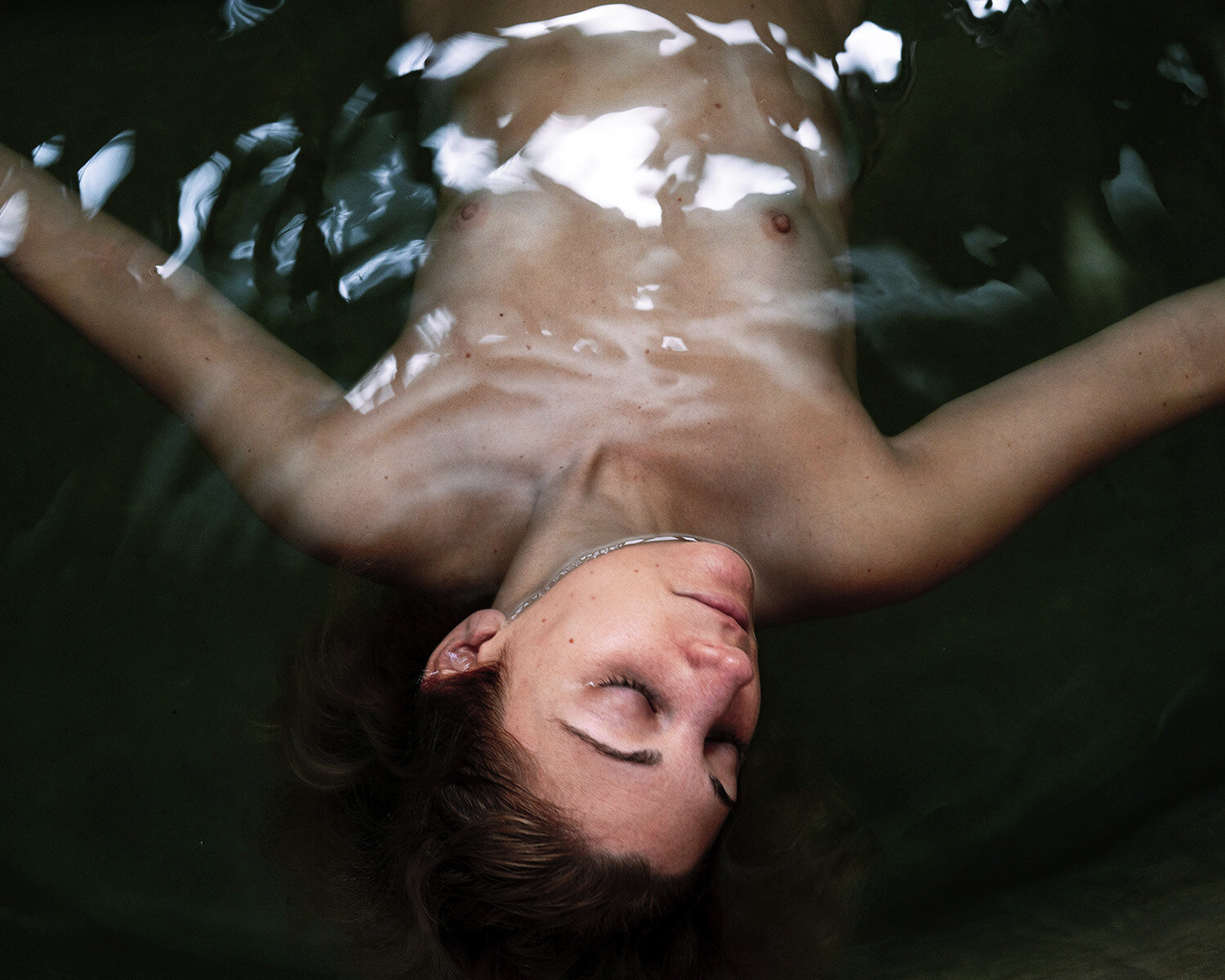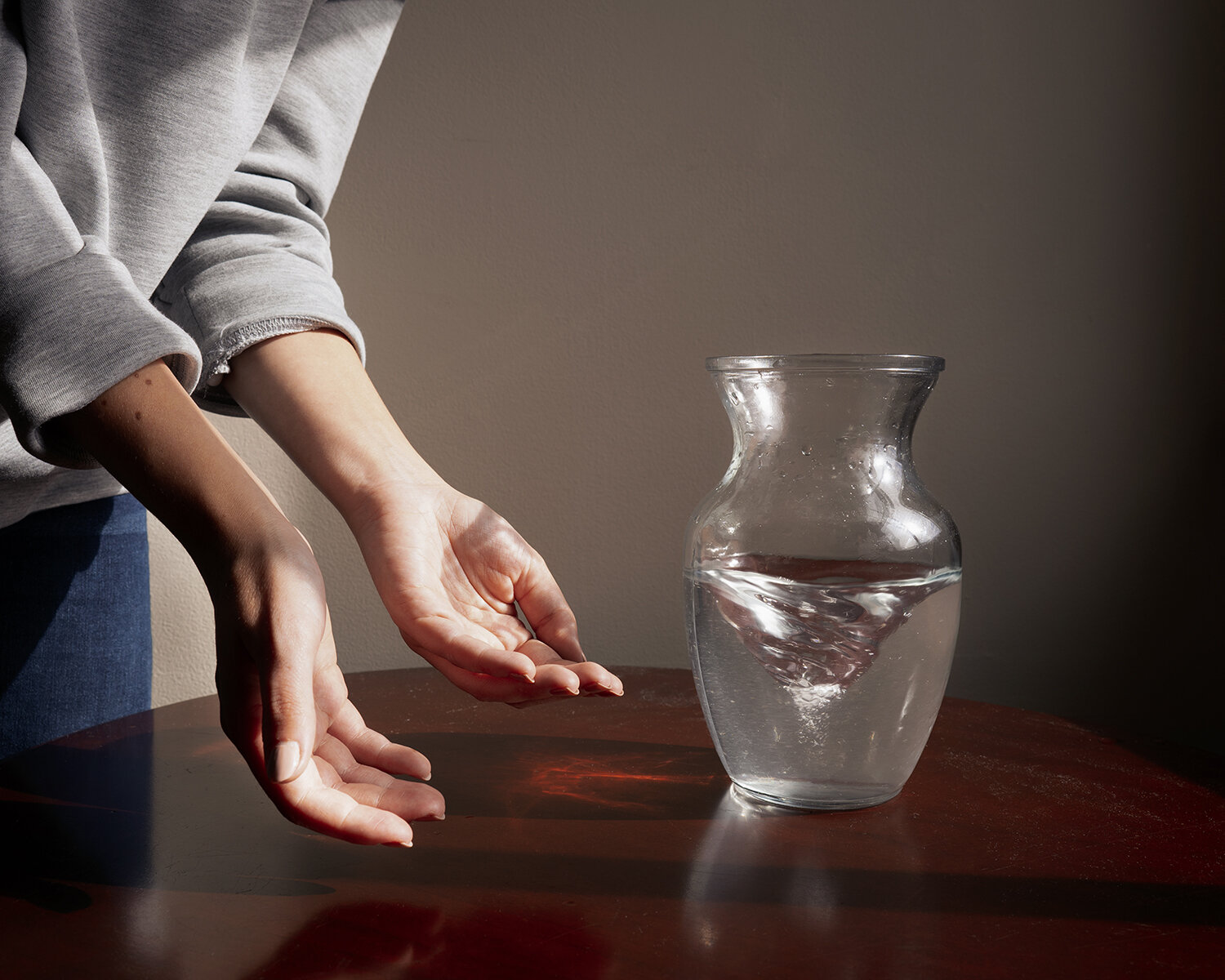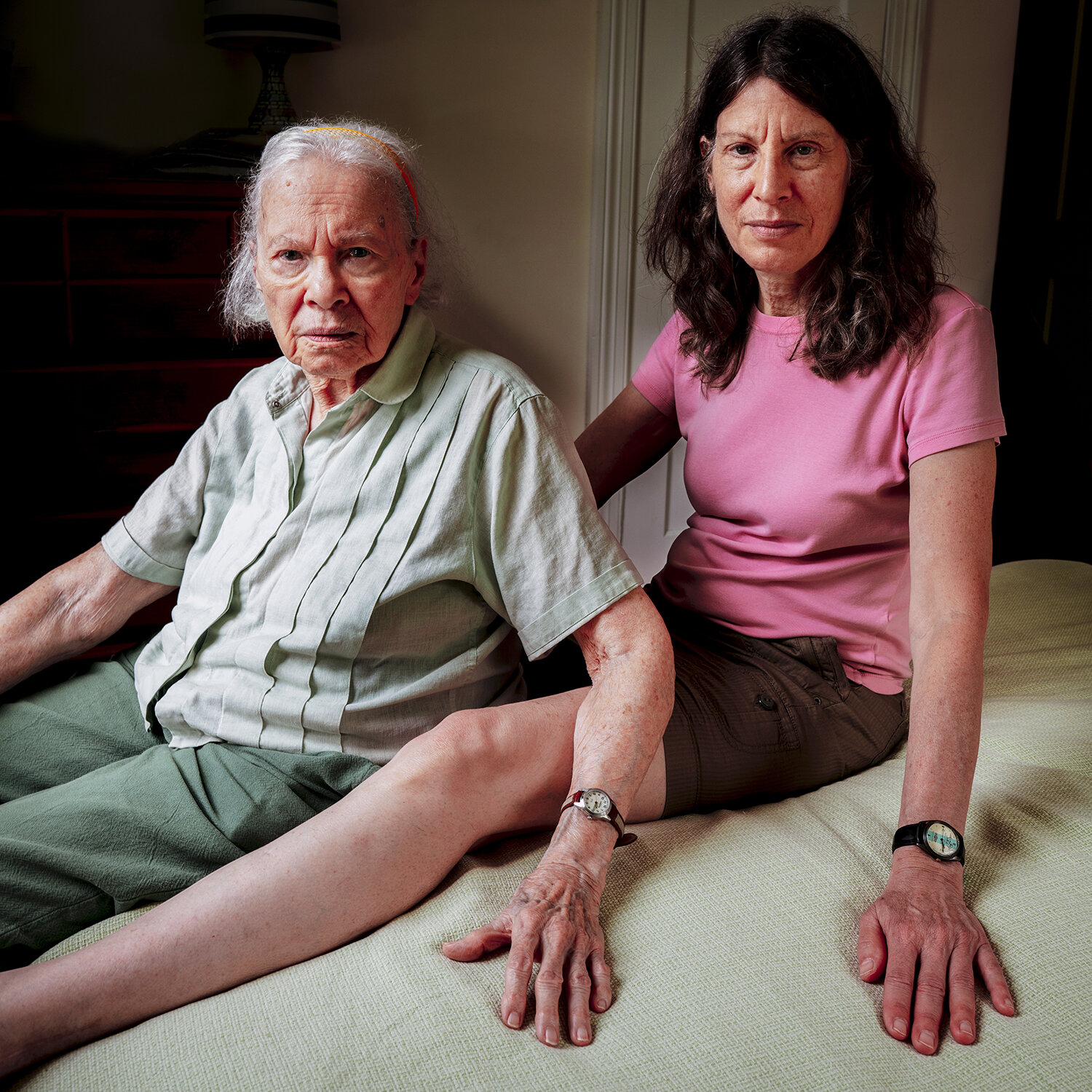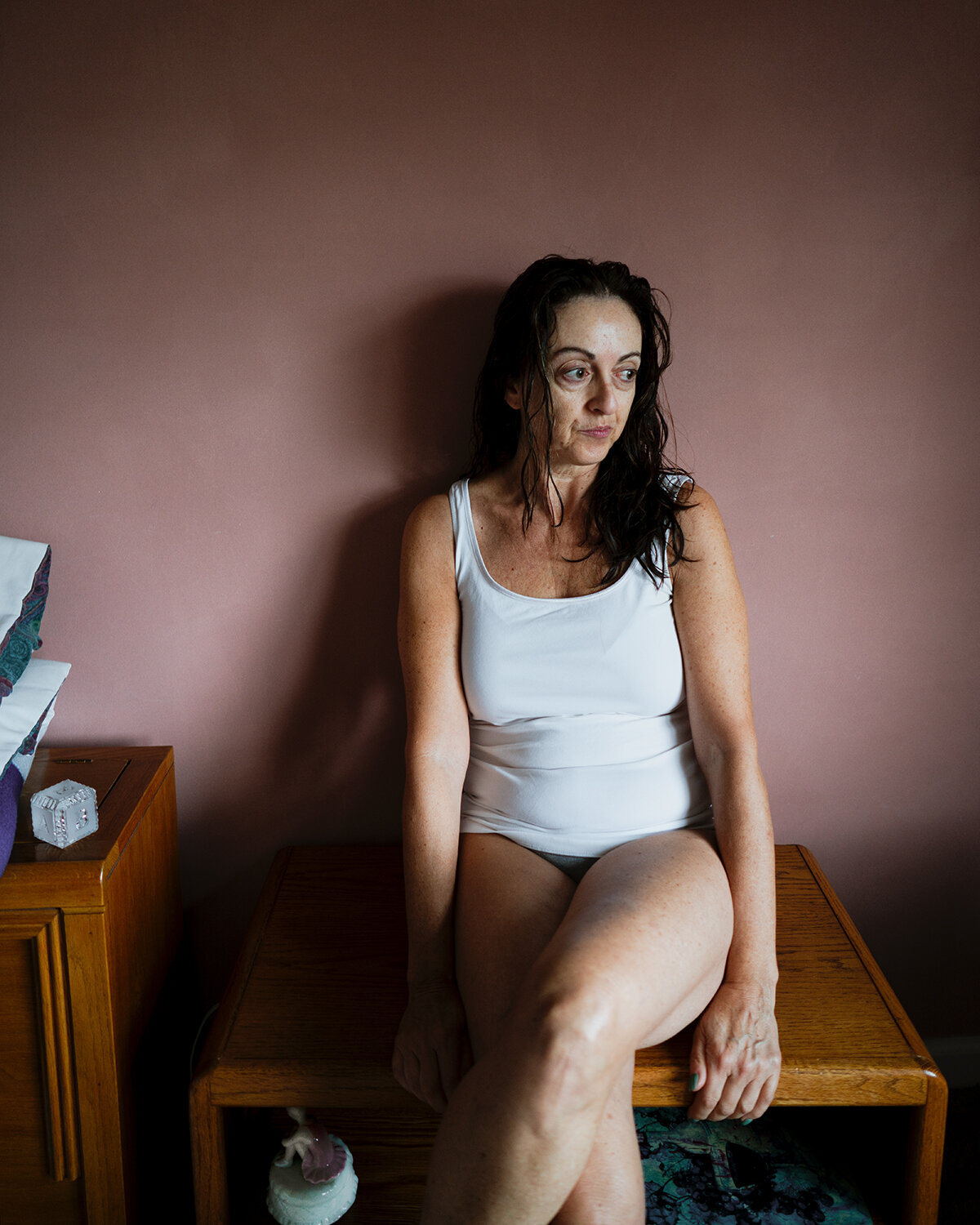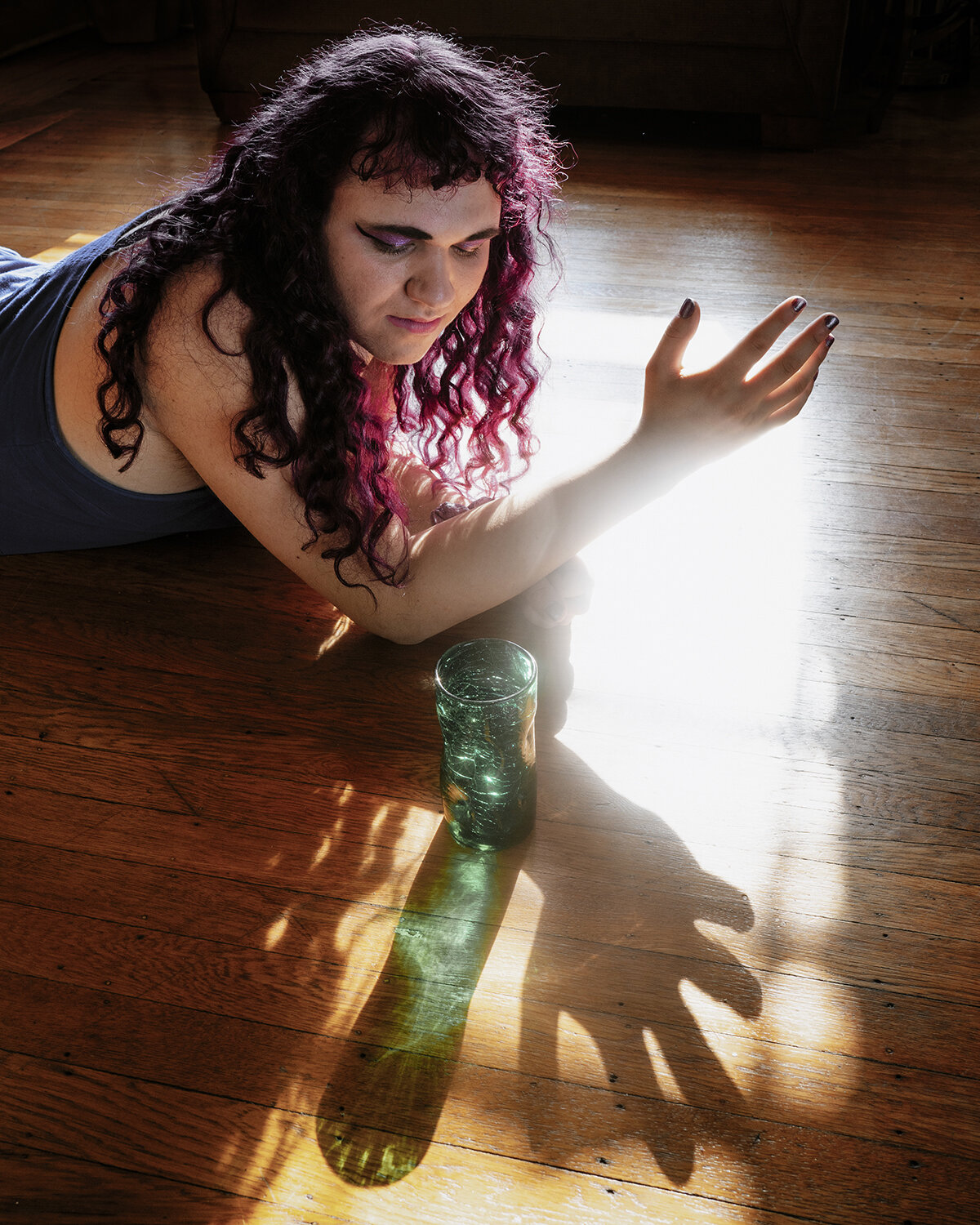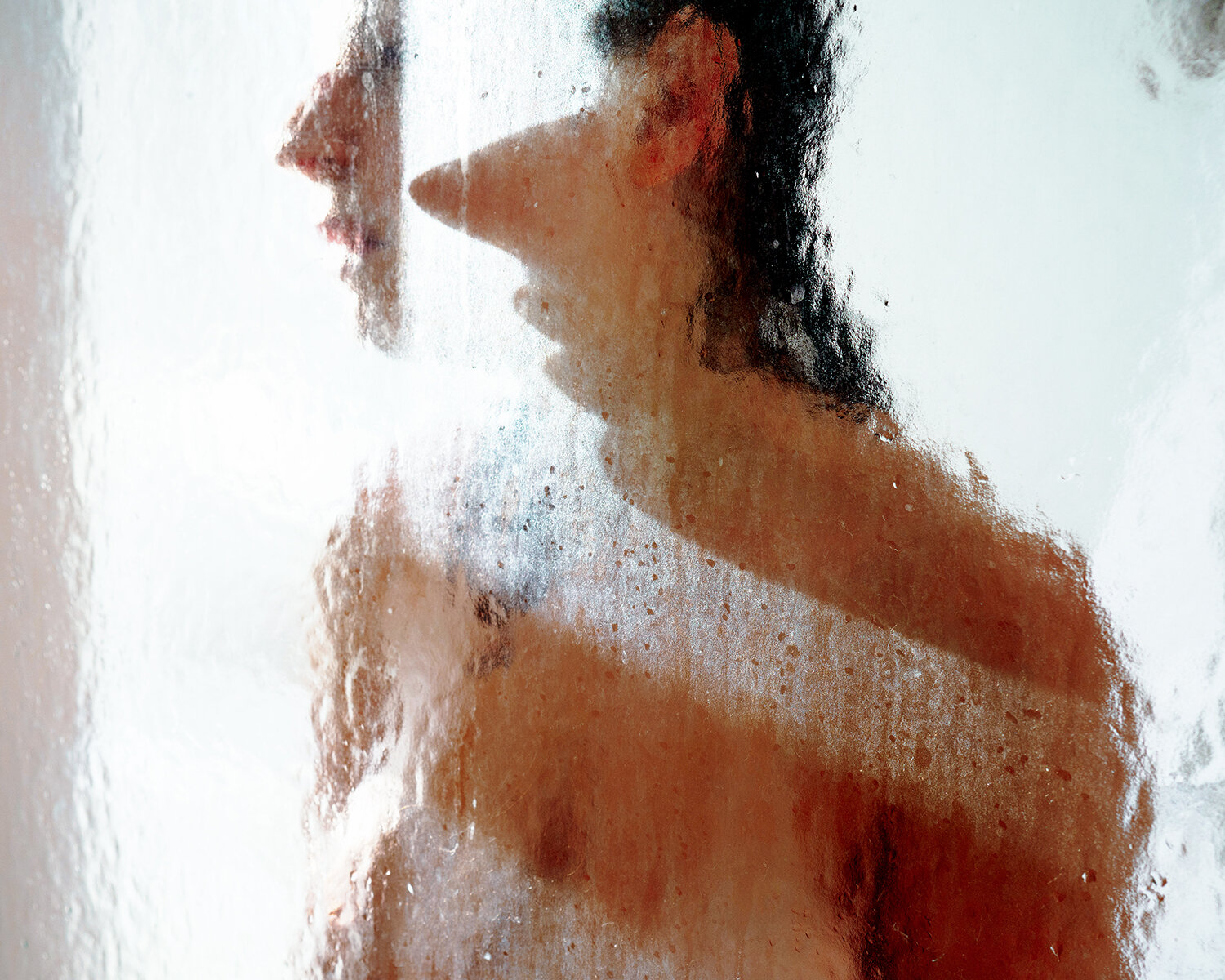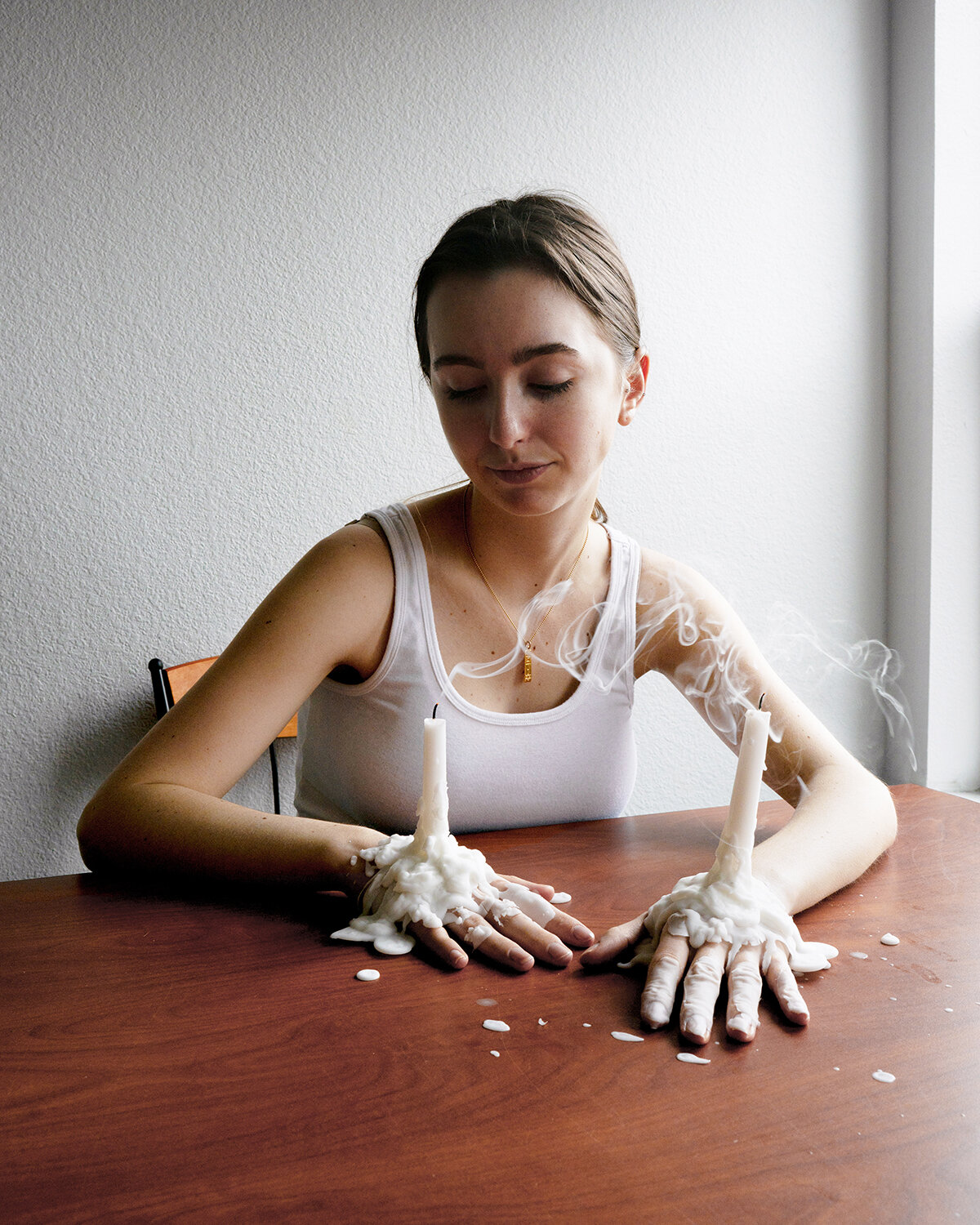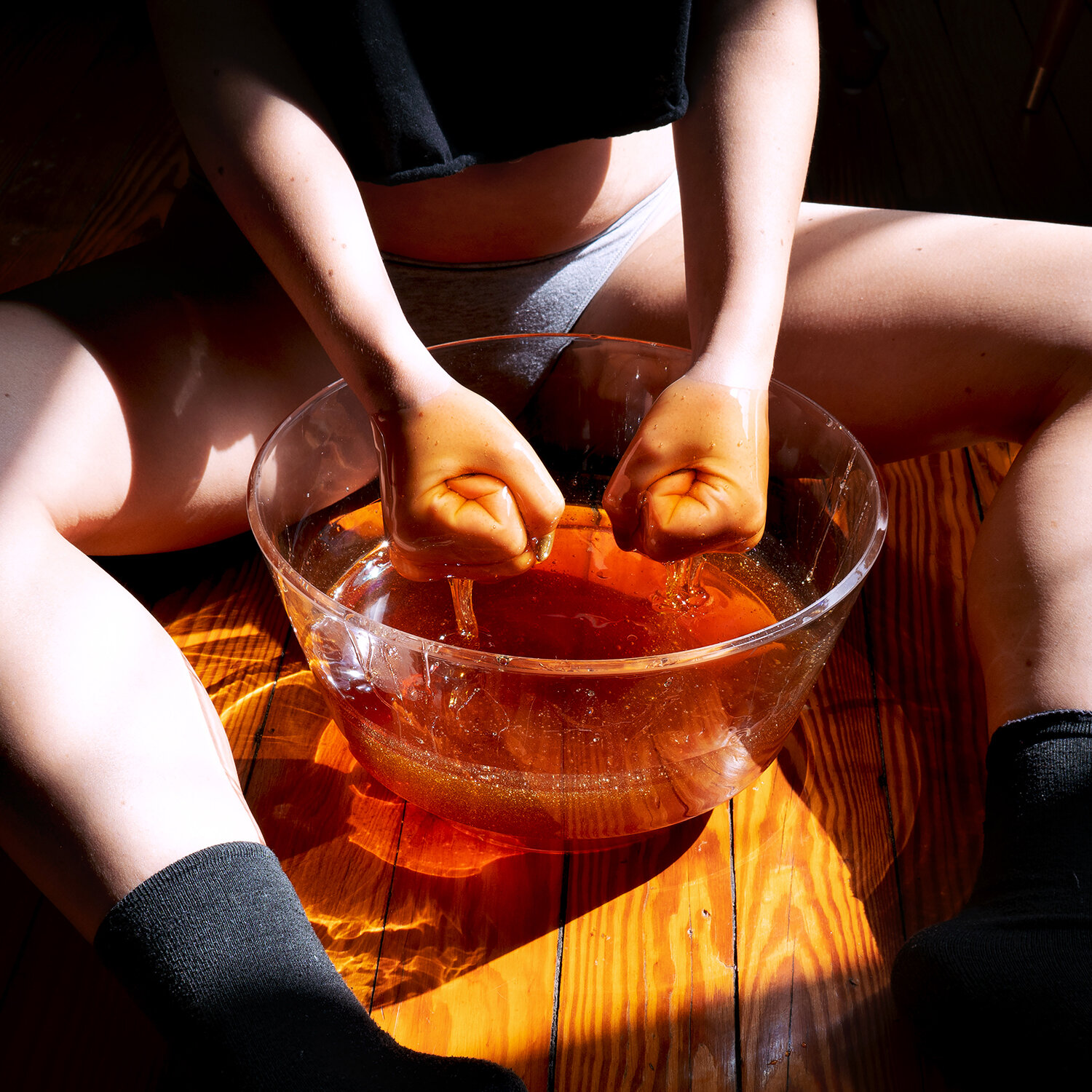Q&A: hannah altman
By Jess T. Dugan | January 2, 2020
Hannah Altman is a Jewish-American artist from New Jersey. Her work interprets relationships between body, interiority, feminine performance, and lineage, exploring the structures that perpetuate them using photographic based media. She has recently exhibited with the Virginia Museum of Contemporary Art, the Pittsburgh Cultural Trust, Junior High Gallery, and the University of Passau Germany. Her work has been published in the Carnegie Museum of Art Storyboard, Vanity Fair, Huffington Post, i-D, and others. She has delivered lectures on her work and research across the country, including Yale University, the Society for Photographic Education Southeast Conference, and Six x Ate artist lecture series. She is an MFA candidate at Virginia Commonwealth University and 2019 recipient of the Bertha Anolic Israel Travel Award.
Jess T. Dugan: Hello Hannah! Thank you so much for taking the time to speak with me today. Let’s start at the beginning: what first drew you to photography, and what was your path to getting to where you are today?
Hannah Altman: Hi Jess! Thanks for having me. I can’t pinpoint an exact moment of discovering photography really, though I am extremely nearsighted, so I imagine on some level having control over what is in focus was likely a huge draw to the medium as a child. I was fortunate to fall into what I love really young. I spent my teenage years in New Jersey glued to a camera, got my BFA from Point Park University in Pittsburgh, and will receive my MFA from Virginia Commonwealth University in Richmond this Spring. My interests and projects vary, but their roots are based in sunlight, portraiture, and narrative image making.
JTD: You and I met last year when I was visiting VCU, and I was struck by images from your project Indoor Voices, which feature you and your mother together. You write that this work is a “collaborative discourse of familial and female oriented complexities that makes a testimony to our lineage and experiences as Jewish women” and that it is built around “intergenerational womanhood, matrilineal responsibility, and the symbolism in quiet intimacy.” Can you expand more upon this idea, and tell me more about this series?
HA: For this project, my mother and I stage self-portraits together. We started five years ago, and in many ways it’s still growing and allowing itself to become. I initiated this project to explore womanhood, performative feminine behavior, and how learned action is carried down from mother to daughter. The images are often made in response to life events happening outside of the frame, and there is an aspect of the work, usually in the details, that is meticulously staged. I think this balance between organic and constructed portrayal of emotion echoes our experiences of womanhood pretty accurately.
JTD: What was your process for making it? Do you consider it completed or is it ongoing?
HA: It’s an ongoing series. We typically make a handful of images per year, so it’s a very slowly built project, a necessary pace, I think. As we've continued to make these photographs every time we’re together, it’s become an interesting staple of our lives and the way we share our time. I think this idea of building our memories photographically as they happen in real time both inside and outside of the frame manifests its own form of storytelling. It’s often that we don’t quite see how an image functions until months, years even, after it’s made. I value its incompletion.
JTD: What was your experience working so collaboratively with your mother? Were there moments of either connection or disagreement that stand out in your memory?
HA: Yes, absolutely. An image from this project that has a heavy presence is one titled In Her Childhood Home While Her Mother Lay Dying, made while my grandma, my mom’s mom, was in hospice care. At the time this project had existed for a few years and had gently assembled into the fabric of our lives. We were spending a lot of time at my mom’s childhood home, being present for my grandma’s final days. These days were very quiet, very withdrawn, a lot of whispering and reading with shoulders pressed against each other on the couch. One of those afternoons, without much conversation about it, my mom and I gathered into a vacant bedroom to make a photograph. She’s leaning on me, the sky seen from the window is bleak and glowing white, and the shutter goes off maybe 5 or 6 times, engraving this weight as a photograph. I barely look at this image. But its weight is always present.
JTD: You are working on a new project, Kavana, which will be exhibited at the Blue Sky Gallery in Portland, OR, from January 2-February 2, 2020. Of this project, you write, “Jewish thought suggests that the memory of an action is as primary as the action itself. Because no physical space is a constant for the Jewish diaspora, time and the rituals that steep into it are centered as a mode of carrying on.” I’m interested in this idea, and also in the ideas of ritual, time, and history more broadly. Can you tell me more about this project and how it came to be?
HA: This is good timing for this question, actually, because much of this project arose from Indoor Voices, specifically the time frame after my grandma’s death. We spent a lot of this transient time going through boxes, digging through boxes of letters, jewelry, and such. I felt really drawn to her Judaica (Jewish ritual objects), and began to photograph them, perhaps as a way to heal and connect.
Some of these objects were designated to be passed on specifically to me, like a gold חי (chai, a symbol of life) necklace photographed on my back, an image included in this project. Other objects were less clear in where they came from and where they were intended to go, and their mystery prompted me to research the roots of certain ritual objects and their purposes. This expanded into exploring different ways of enacting ritual, and the ways in which repeating action forms a sense of collective memory by the Jewish community. Collective memory, the idea that all Jews share a past by repeating stories, performing rituals, passing down heirlooms, is heavily involved in Jewish cultural life. I started thinking about these inheritances, and how they connect me to my immediate bloodline but expand beyond that, contributing to this idea that memory spans generations and is fully accessed through Jewish action.
This work uses Jewish culture, ritual, and folklore as a springboard to narrate photographic stories. The images build from the ancestral significance of certain actions and engage them as a source to initiate stories. With so many valid interpretations of what Jewish texts are talking about (this study and commentary of interpretations is called midrash), Jewish thought proposes that exploring varying interpretations of a story is as significant to study, understand, and perpetuate as the story itself.
For some, this space of interpretation and enactment exists outside of a physical place. A central tenet of the historical Jewish experience is one of profound displacements, existence in roaming diasporas, lacking a solid physical place. With that, there’s a tendency to privilege time, action, and history itself over place and space. I love this secondary approach to space. Because no place is a given, we prioritize time and the way we fill it.
Jewish action, and this work that portrays Jewish action, is cemented not because of where it takes place, but because of how the ritual makes use of time.
JTD: Although Indoor Voices and Kavana are two distinct projects, they seem to be part of a cohesive inquiry. What would you describe as the unifying themes within your work?
HA: There’s something intimately maternal about the act of passing down, and this appears in my work in different ways. I think, more broadly, I'm interested in photographic duality, in tangled narratives leading to many endings, in inheritances, and being aware of how to best utilize what is passed on to you. I’m exploring these ideas as they apply to me and my experiences, but I think they exist in conversation with everyone who has an open ear.
JTD: Your photographs depict moments that are intimate and meaningful, and they are also beautifully rendered, visually. Talk to me about the role of light and color in your work. How significant are these elements?
HA: Really important, especially sunlight. I think the way light is rendered is really the root of a photograph that sticks, above all else. There’s a lot that can be planned in a photograph – subject, intent, composition – but there’s always something a bit out of your control when it comes to how sunlight will lay across a body. I love this intangibility. It’s really freeing.
JTD: We are living in a complicated moment, socially and politically, as I’m sure you’re well aware. How has this moment affected your work as both a woman and someone who is making work specifically about Jewish identity?
HA: It surely is a complicated moment that needs a lot of different voices to be heard with patience. I certainly feel a more critical sense of urgency to make this work than I have in past years. Beyond that, though, I think a deeper sense of empathy is fostered when we focus beyond how people identify and hold ourselves accountable in understanding how different perspectives develop through these identities.
JTD: Your show at Blue Sky opens today- congratulations! What’s next for you after this exhibition? Do you plan to continue working on Kavana, or do you see other projects on the horizon?
HA: Thanks so much! I’m so excited for the opening tonight and for an artist talk on January 4th at the gallery. After this exhibition, I’m planning to continue these ideas in whatever form they may take at my thesis solo exhibition at the Anderson Gallery in Richmond, VA this upcoming April.
JTD: Great, thanks so much Hannah!
All images © Hannah Altman







